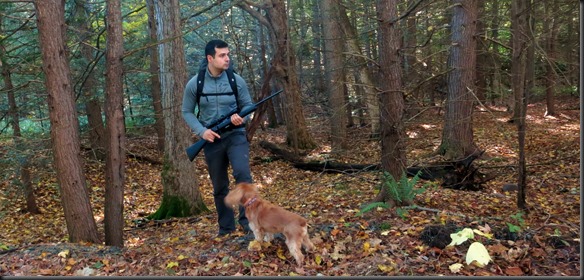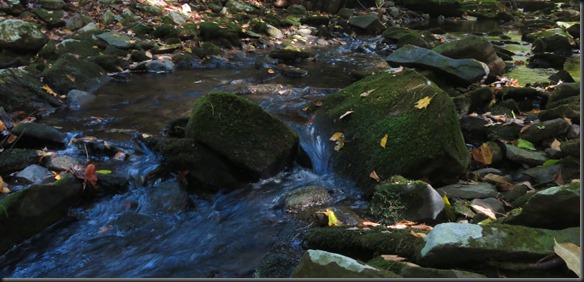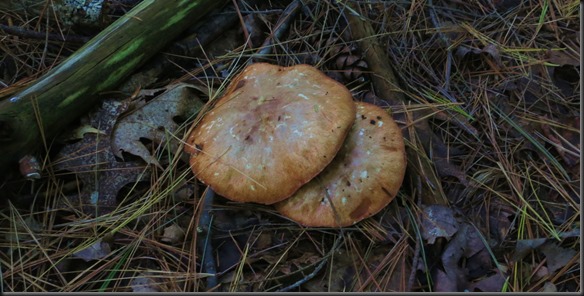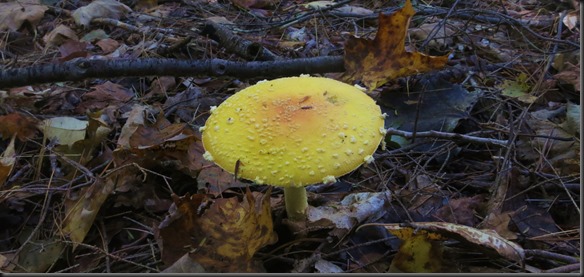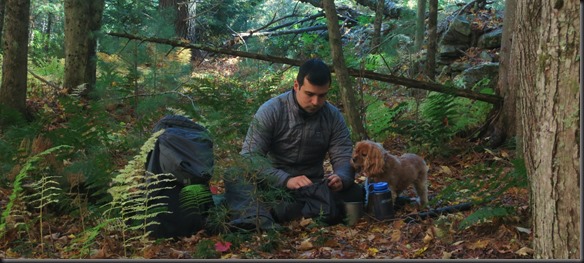Some time ago I started writing about a concept I called The Modern Woodsman. The idea itself was nothing new, but I felt that it needed to be reiterated and it’s existence pointed out. In short this is the concept that woodsmanship did not die out or vanish after some “golden age” decades ago. Instead it asserts that woodsmanship continues to exist, develop, and evolve through every generation including ours. Modern woodsmen continue to travel through the wilderness, using techniques learned from past generations as well as the developments in knowledge and technology that have come since then.
The Modern Woodsman: an individual who is able to undertake long term, long distance trips, deep into the wilderness, only with supplies one could carry and what could be gathered from the surrounding environment. The equipment and skills used are guided by their actual practicality and are not restricted by any historical period limitations or aesthetic factors. The trips undertaken occur in the present, within the context of our current society, laws, and regulations.
In this post I want to look at fire and fire making methods within the context of The Modern Woodsman.
When discussing fire and modern woodsmanship, most would expect a discussion on the tools used for fire starting, and whether one should use new ones or ones from the past. While there is certainly fire starting technology for us to look at, I want to start with a much more important concept when it comes to fire. I want to start with the significance fire has to the modern woodsman and how that differs from the role it has played for earlier generations of woodsmen.
The Woodsman’s Reliance on Fire
If one looks only at the developments in fire lighting technology, one may conclude that we have simply had changes in the degree of the ease of fire lighting; friction fire lighting methods get replaced with fling and steel, then with matches, then with lighters, etc. However, I believe that a much more important shift in kind has occurred for the modern woodsman and his relationship with fire that goes far beyond its method of lighting; a result of the overall progression of technology utilized by the woodsman.
Vague enough for you? Well, what I am trying to say is that developments in the overall gear of the modern woodsman have significantly decreased the importance of fire to the woodsman. I believe that change has been a radical shift when compared to the relationship between fire and earlier generations of woodsmen.
Reading the accounts of woodsmen from the early 20th century and prior, we get a clear picture of how fire was an essential tool for being in the woods. It wasn’t a nicety, or an emergency measure, it was a necessary part of every day existence in the wilderness. Keeping one’s self from freezing to death, purifying water (although admittedly most didn’t seem to care), cooking food, etc all depended on the existence of a fire. As a result, many of the tools carried by woodsmen of the time were designed to accommodate that need.
This relationship with fire for our predecessors was a necessity dictated by the available overall technology that was at the woodsmen’s disposal. A blanket and a canvas tarp are very poor protection from the elements, and one wouldn’t last long without a good fire. Water filters and portable stoves were non existent. On the flip side, there were virtually no regulations limiting the number of trees you can fell in a day or where you can light a fire.
At some point however there was a drastic shift in the relationship woodsmen have with fire; a change in kind, not just in degree. Fire went from being a necessity to being a nicety. It stopped being essential for everyday life in the woods. Instead it became something to be relied on in emergency situations, and a source of entertainment and comfort during long nights.
I believe this change has been a direct result of developments in outdoor technology. Just like the tent/tarp allowed woodsmen to cut the connection to natural shelters and venture into otherwise unprotected areas, other technological developments have severed the woodsman’s need to rely on a fire. Modern sleeping bags easily allow a woodsman to spend many nights in the woods in extremely low temperatures without reliance on a fire. Similarly, highly insulative yet portable clothing has allowed travel without having to stop and warm one’s self by a fire. I believe these were the most significant changes which have altered the relationship the modern woodsman has to fire. They are then followed by other changes like the availability of portable water filters, and convenient lightweight stoves.
Moving beyond the technology, the modern woodsman has also had to make changes in his reliance on fire due to legal considerations and overall ecological responsibility. We all understand that at certain times of the year in certain places it is not a good idea to start fires, whether or not regulations dictate so. Similarly, we understand that felling a fully grown tree each day so we can keep a fire burning through the night is not the most ecologically sound approach in many parts of the world.
The result of all this has been that the modern woodsman has a very different relationship to fire than previous generations. The shift is much more profound than the type of device one uses to light their fire. In my opinion it has drastically changed how a woodsman interacts with the environment, and is markedly different from the reality faced by prior generations.
Being well versed in fire lighting techniques and being able to build and maintain a fire are still crucial skills for a well rounded modern woodsman. However, the modern woodsman also understands that he is not constrained by the need for a fire, and knows how to spend prolonged periods of time in the woods without reliance on one.
Fire Related Tools
For me a much less important aspect of fire and The Modern Woodsman is the tools related to fire making. Clearly the tools have changed and evolved over the decades, but I believe those changes to be secondary to the above discussion. They are simply a linear improvement of fire lighting technology making the process easier without altering it fundamentally.
That being said, there have indeed been changes. Some of them have been simply the result of new technology becoming available, others have been the result of the decreased reliance on fire discussed above.
Again, at this point you probably expect me to discuss lighters and ferro rods, a favorite online topic, but I believe these technological changes are the least important ones.
- Axe:
A much more significant change that I see is the drastically reduced reliance on the axe. The relationship between the modern woodsman and the axe has altered just as drastically as the relationship to fire, and in large part because of it. For woodsmen of earlier times, who had no choice but to rely on fire during their travels in the wilderness, the axe was probably the most important tool they carried. Each book written at the time dedicated large portions or even full chapters to the topic of the proper axe. The significance of the axe was a direct result of the reliance on fire. An account by E.H. Kreps states: “Only a single blanket and a small, light canvas shelter can be taken and to sleep without a fire under such conditions is out of the question. A good hot fire must be kept going and such a fire will consume nearly half a cord of wood during the long northern night.” Of course he is talking about extreme cold, and is discussing the use of soft woods like pine, but no matter the wood, very large quantities were needed to sustain life in the woods. Without a good axe, the task of gathering that much wood would have been out of the question.
Of course, that is no longer the case; not because an axe is not a good wood processing tool, but because the reduced reliance on a fire, has reduced or even completely eliminated the need for an axe when it comes to The Modern Woodsman. Now, you guys know I am a huge fan of axes. I enjoy working on them and I enjoy using them. The reality for the modern woodsman however is that in most cases the tool in no longer needed, and it certainly doesn’t carry the same significance that it once did. Most modern woodsmen traverse great distances, spend extended time in the woods, reach previously unthinkable destinations without relying on an axe. I think this has been one of the most significant technological changes that has resulted from the altered relationship between fire and the modern woodsmen. We still carry axes because they are fun and because they are nice to have, but much like the need for a fire, it is a nicety. Forgetting your axe no longer spells the end of a trip.
- Stove
The second big technological change when it comes to The Modern Woodsman and fire has been the introduction of the portable stove. While different attempts at such a technology had been made for years, I believe the introduction of the Primus stove in 1892 and its subsequent proliferation has been a very impactful event in woodsmanship. The reason for the impact is not that the stove has replaced the fire as a means of cooking. While practically that has largely been the case when it comes to wilderness excursions, I do not believe that was a driving force for its creation nor the reason for its impact.
What the portable stove has managed to do is to give the modern woodsman a significantly expanded range into terrain that was previously unattainable. Portable stoves have allowed for the exploration of both poles as well as some of the highest peaks. They have taken ancient northern technologies that relied on the burning of fuels like seal oil, and transformed them into a portable source of fire, not reliant on wood. It’s main benefits interestingly are not warmth, or even the ability to cook, but rather the ability to melt snow and ice into water. Without this technology, many areas of the world would be much harder or outright impossible to reach.
While the main practical impact of the stove to the modern woodsman has been the exploration of harsh regions, its impact has spread far and wide, and has had an unquestionable impact on fire as used by woodsmen around the world. Under many circumstances, it has eliminated the need for a fire (or more precisely, has made it portable and self sustained), even further distancing us from the connection prior generations of woodsmen had to it. In many ways that has allowed the modern woodsman to travel faster, further, and into harsh terrain more than ever before. It has also allowed the modern woodsman to deal with exploration of regions where legal or ecological restrictions prevent the traditional use of fire.
- Fire Lighting Tools
Lastly, I want to mention the thing which most people immediately jump to when discussing woodsmanship and fire: the fire lighting tools. Most woodsman strive to have a well rounded knowledge of fire lighting methods. Some are more rounded than others depending on their interest in history. However, the modern woodsman has at his/her disposal very practical and proven tools for lighting a fire. The main ones in chronological order are matches, lighters, and ferro rods. While many don’t realize that ferro rods are a modern tool, they are in fact one of the last fire lighting tools to come on the market. This relationship between woodsmen and fire lighting tools, and in particular the desire to have the most efficient fire lighting equipment can be seen going back to the early 20th century and even earlier. There is a reason the pioneers relied on flint and steel rather than friction fires, and there is a reason everyone from Nessmuk to Kephart used matches. It is the same reason why modern woodsmen use lighters. While each is a finite resource, the capability they offer to quickly and reliably make a fire makes them invaluable to the woodsman.
While much has been written about which exact fire lighting tool one should carry, I believe ultimately it is of little significance. From the perspective of The Modern Woodsman, where practicality on excursions of non-imaginary duration are key, in my opinion the top contenders are lighters and matches. Regardless of your choice however, I believe that its importance is far secondary to the understanding of the new type of relationship that woodsmen of today have with fire, and how as a result approaches described by woodsmen of the past may not be directly applicable.
Studying texts from people like E.H. Kreps and Kephart is important and furthers our knowledge, but we have to be careful when applying their gear lists and techniques to our own, especially when it comes to fire. Much of what woodsmen like them have written on the subject has been due to necessity dictated by the fact that they didn’t have a four season tent and a –40F/C sleeping bag. I doubt Kreps would have been dedicating a part of his day to collecting half a cord of wood for each night instead of checking his traps if he had the gear the modern woodsman has at his/her disposal.
![IMG_0969[3] IMG_0969[3]](http://lh3.googleusercontent.com/-ZfmK0wDxSIw/VjIO19rtmbI/AAAAAAAAQFI/PzZtxwjoDvY/IMG_09693_thumb1.jpg?imgmax=800)
